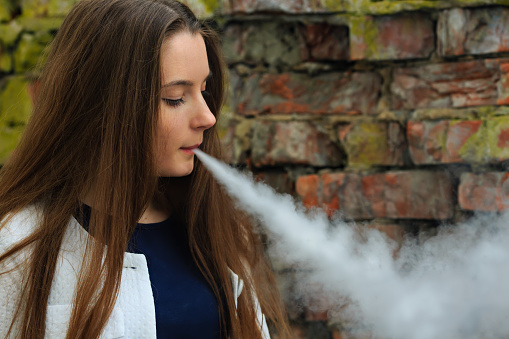Teens cite peer pressure among vaping concerns

It starts with a high school student innocently tapping a classmate on the shoulder.
When the teen turns around, their classmate exhales a cloud of vapour from an e-cigarette directly into their face.
Some teens might consider this a harmless joke, but the London region’s top public health officer – who calls the behavior “vape blasting” – says it’s a sign of how rampant e-cigarette use has become in London secondary schools.
After the HEAL Youth Advisory Council (HEALYAC) presented a series of recommendations on youth vaping to the Middlesex-London Health Unit, a new partnership was forged to create a vaping awareness campaign that targets teens.
“It’s so important that this message comes from teens,” health unit head Dr. Christopher Mackie said of the collaboration with the Western University-led youth council.
The group’s recommendations, based on a review of research and students’ experiences, include more research into vaping, stricter rules on marketing, immediate government regulation, improved detection and enforcement in schools, and the creation of a support group for teens trying to quit using e-cigarettes.
When HEALYAC was formed one year ago, the students identified vaping – along with mental health and climate change – as one of the major issues facing teens. The group voted to do more research on the topic and crafted a position statement, said Western University geography professor Jason Gilliland, who oversees the group of 14 high school students.
At last Thursday’s health board meeting, the students described how high school bathrooms are used to vape, the ease of getting e-cigarettes, peer pressure to vape, how males are more likely to vape than females, and teens’ assumption that e-cigarettes aren’t harmful like tobacco products.
“I don’t dismiss anecdotal evidence, because this is their own lived experience,” Gilliland said. “And this is what they’re observing, so they’re the experts of their own domain.”
The prevalence of vaping among youth – one in five high schoolers reported vaping, according to a Health Canada survey published this year – may come as a surprise to some.
“My board members expressed afterwards how shocking (the information was) that they received,” Mackie said of the teens’ presentation.
Last month, the health unit announced that an area teen contracted a serious respiratory illness that officials linked to vaping. The unidentified high school student, believed to have the first case of vaping-related lung illness confirmed in Canada, spent time in intensive care unit on life support, officials said.
E-cigarettes can be bought at most gas stations, corner stores and specialty shops by anyone over 19 years old, just like tobacco products. The battery-powered devices heat up a liquid solution, allowing users to inhale aerosol, commonly called vapor. E-cigarettes come in a variety of flavours – everything from cotton candy and carrot cake to tobacco and menthol – and often contain nicotine.
Vaporizers are also used to consume cannabis extracts, including tetrahydrocannabinol (THC), the component that produces a euphoric high, and cannabidiol (CBD), a non-psychoactive component that’s touted for its therapeutic benefits.
Because cannabis edibles and extracts were made legal only last week, and won’t hit store shelves until mid-December at the earliest, users have turned to the black market to buy cannabis-infused vape pens, which sometimes contain additives that pose health risks.
420 Intel is Your Source for Marijuana News
420 Intel Canada is your leading news source for the Canadian cannabis industry. Get the latest updates on Canadian cannabis stocks and developments on how Canada continues to be a major player in the worldwide recreational and medical cannabis industry.
420 Intel Canada is the Canadian Industry news outlet that will keep you updated on how these Canadian developments in recreational and medical marijuana will impact the country and the world. Our commitment is to bring you the most important cannabis news stories from across Canada every day of the week.
Marijuana industry news is a constant endeavor with new developments each day. For marijuana news across the True North, 420 Intel Canada promises to bring you quality, Canadian, cannabis industry news.
You can get 420 Intel news delivered directly to your inbox by signing up for our daily marijuana news, ensuring you’re always kept up to date on the ever-changing cannabis industry. To stay even better informed about marijuana legalization news follow us on Twitter, Facebook and LinkedIn.




